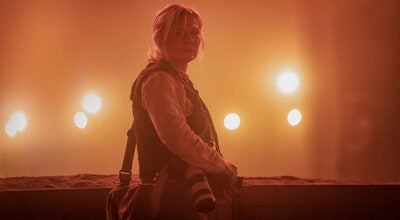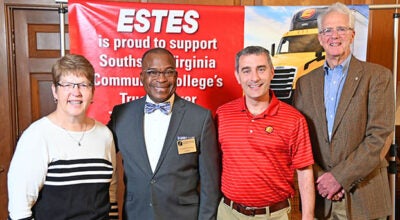Judy Moore: African American History in Appalachia
Published 12:00 pm Thursday, June 23, 2022
|
Getting your Trinity Audio player ready...
|
For more than 10 years, I have wanted to learn more about the history of African Americans in the Appalachians of Southwest Virginia. Of course, their influence was there for many years.
That desire to learn more about blacks in the state’s Appalachian region was enhanced as an undergraduate at Mary Baldwin College. I took a course in Appalachian history and the textbooks had little if any information on the existence of blacks and their contributions in Southwest Virginia.
We have the stereotypical viewpoint from movies and TV, but there is a reality that is available for all to see and it is The Appalachian African American Cultural Center in Pennington Gap in Lee County. Lee County is the western most county in Virginia formed from Russell County in 1792 and it borders Kentucky and Tennessee. Pennington Gap came into existence with the extension of the Louisville and Nashville Railroad in 1810 and was incorporated in 1811. Coal mining was a major industry in the town.
The Appalachian African American Cultural Center was formerly a one room schoolhouse and the mission of its founders Ron and Jill Carson is to preserve and share the black history in Southwest Virginia with others. Ron has a close connection with the center because his great-great-grandmother Rachel Scott owned the property in the 1800s, selling the land to Lee County for $750. In 1939, they built the only African American school there with $16,500.
Mr. Carson’s mother was educated there from 1939 to 1940 and he himself went to school there before the 1965 desegregation of Lee County Schools. Before 1940, African-American children in Lee County were educated in a rundown church; Sundays were for worship services. The principal of the school contacted Thurgood Marshall, who was with the Richmond NAACP about the building’s condition. He sought assistance for renovations, but received no help. Hence, the construction of the one room school.
Students used an outdoor toilet and for playground equipment parents fashioned old socks into balls to play with along with brooms and mop handles.
Even though racial segregation in public schools became unconstitutional on May 17, 1954, it took Lee County until 1965 to integrate. Yet, local doctor Eddie Beaty spearheaded a push to integrate more quickly.
They walked to the white high school in Pennington Gap on an August morning in 1965 and the principal there asked what took them so long. Ron Carson felt like he had stepped onto the campus of Harvard.
Years later after living in Boston, the Carsons returned to Pennington Gap in 1986. With the consolidation of the schools years ago, the one room schoolhouse was in danger of being torn down and the land being auctioned.
Ron and Jill knew they had to do something to preserve the illustrious history of the school. It was a challenge to acquire the building since the deed did not include returning the property to the Carson family despite the fact that Ron’s great-great-grandmother built the school.
With help from the NAACP and local media coverage, Lee County handed the property back with the stipulation that the school continuously be used as a polling place. In fact, there were fewer than 100 blacks in Pennington Gap in a county of 25,000.
Ron and Jill worked with the Highlander Research and Education Center in Tennessee to assist them in preserving the history of blacks in the region. They preserved the African American experience in Lee County by collecting photographs, historical documents and other items that tell a detailed story of black Appalachians in Virginia.
When visitors walk into the center, it is not uncommon that many may see a picture of a parent or grandparent. For example, there is a guitar of Dickinson County native Ral Gilmore, who was active in his church and performed with world renowned musicians until his death in 2000.
In order to get rid of the scourge that is racism you must confront it and talk about it honestly. To do so, the Carsons held programs and workshops with people such as judges, lawyers and teachers participating in these discussions.
Sue Ella Kobak confronted her misconceptions about who is an Appalachian-blacks are a part of that family. In addition, she was among those who helped save the school. The AAACC’s board of directors is blessed with a diverse group of community members — black and white — including the Carsons.
Not only are Ron and Jill heavily involved with the AAACC, but Ron is the founder of the black lung treatment program at Stone Mountain Health Services in Southwest Virginia. His work was recognized by Congress. Jill is the first African-American woman on the Pennington Gap Town Council.
I am so excited to profile this part of African-American History. If it weren’t for people like Ron and Jill Carson, black Appalachia would be overlooked and forgotten. By the way, there is a book entitled, “What We Got Wrong About Appalachia,” by Elizabeth Catte, board member and I plan to read this soon. Visit their website at www.aaaculturalcenter.org to learn more.
Judy Moore lives in Wylliesburg and is a tour guide at The Central High Museum. She can be reached at v5agabond2@gmail.com.



